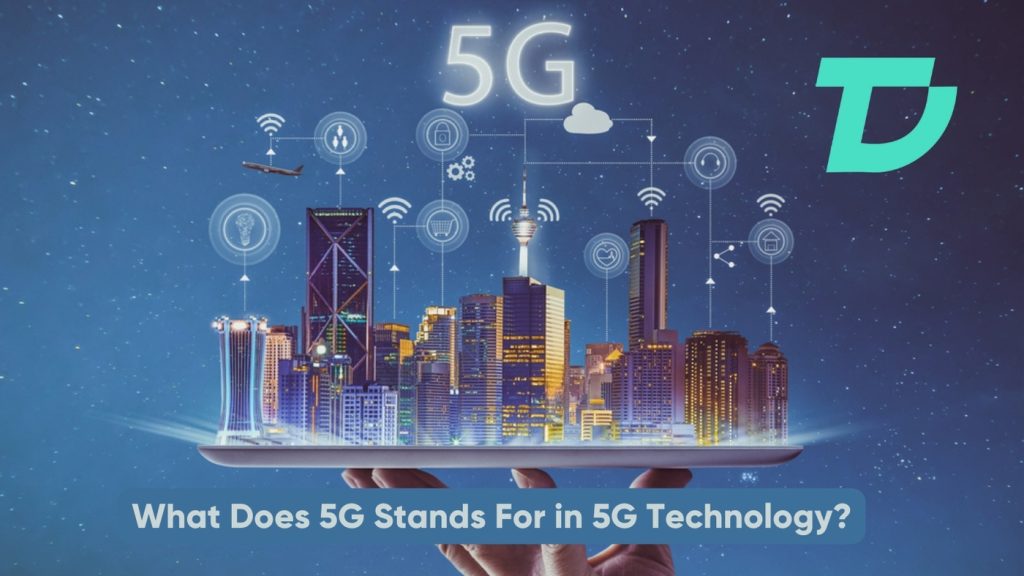Deciphering 5G Technology: A Deep Dive into the Significance of “5G” in the Fifth Generation of Mobile Networks
In the ever-evolving landscape of technology, the term “5G” has become a ubiquitous and captivating subject, provoking curiosity about its underlying significance. What exactly does “5G” stand for in 5G technology, and how does it contribute to the next phase of mobile communication? This detailed exploration aims to unravel the intricacies, breaking down the “5G” acronym in comprehensive detail while explaining the transformative potential it holds.

Understanding the Basics
At its core, the “G” in 5G stands for “Generation.” This signifies that 5G is the fifth iteration in a series of mobile network advancements, following the footsteps of 1G, 2G, 3G, and 4G. Each generational leap brings about substantial improvements, not just in terms of speed but also in capacity and technological capabilities.
Breaking Down “5G”
To comprehend the meaning encapsulated in “5G,” it’s essential to dissect the numeral “5.” This numeral designates the fifth generation, underscoring the cutting-edge nature of this technology. Positioned as the latest and most advanced version of mobile networks, 5G represents a paradigm shift, promising unprecedented advancements in wireless communication.
Key Features of 5G
Enhanced Speed
Among the standout features of 5G is its unparalleled speed. When compared to its predecessor, 4G, 5G boasts significantly faster data transfer rates. This heightened speed translates to quicker downloads, seamless streaming experiences, and a remarkable reduction in latency, which is the time it takes for data to travel between devices.
Greater Capacity
A notable aspect of 5G is its capability to accommodate an extensive number of connected devices concurrently. This increased capacity is paramount in a world where the proliferation of smart devices, from smartphones to smart homes and the Internet of Things (IoT), continues unabated.
Low Latency
Latency, often a critical factor in user experience, refers to the delay between sending and receiving data. 5G aims to minimize this latency, providing near-instantaneous communication. This is particularly crucial for applications like augmented reality (AR), virtual reality (VR), and real-time gaming, where even the slightest delays can significantly impact the user experience.
Improved Connectivity
The promise of improved connectivity is at the core of 5G’s design, targeting both urban and rural areas. Achieved through a denser network of smaller cells, 5G aims to eliminate connectivity gaps, ensuring a consistent and reliable connection even in remote locations.
Innovations in Technology
Beyond offering faster internet on our smartphones, 5G acts as a catalyst for groundbreaking innovations. The enhanced speed and reliability create a foundation for transformative technologies such as autonomous vehicles, remote surgery, smart cities, and more. The deployment of 5G sets the stage for a future that once seemed confined to the realms of science fiction.
The Evolution of Mobile Networks
To truly grasp the significance of 5G, it’s beneficial to take a brief journey through the evolution of mobile networks:
1G (First Generation)
The inaugural generation introduced analog voice calls, laying the foundation for the concept of mobile communication.
2G (Second Generation)
With the advent of 2G, digital voice calls became a reality, accompanied by the introduction of Short Message Service (SMS).
3G (Third Generation)
3G ushered in the era of mobile internet, enabling users to browse the web, send emails, and engage in more advanced forms of communication.
4G (Fourth Generation)
4G marked a significant leap, providing high-speed internet on smartphones and supporting activities like video streaming and online gaming.
5G (Fifth Generation)
And here we stand at the threshold of the 5G era, witnessing a convergence of technological advancements that redefine the capabilities of wireless communication.
The Future Implications of 5G
As we delve into the intricate details of 5G, it becomes apparent that its implications extend far beyond mere speed improvements. The comprehensive nature of 5G’s enhancements opens doors to unprecedented possibilities:
Revolutionizing Industries
5G’s impact extends across various industries, from healthcare to transportation. The low latency and high capacity of 5G networks enable real-time monitoring and control, revolutionizing sectors through innovations like remote surgery and autonomous vehicles.
Empowering IoT
The Internet of Things (IoT) thrives on connectivity, and 5G provides the robust infrastructure needed for the seamless integration of countless devices. Smart homes, smart cities, and industrial IoT applications all stand to benefit from the enhanced capabilities of 5G.
Enhancing Entertainment Experiences
The faster speeds and reduced latency offered by 5G translate into enhanced entertainment experiences. Augmented reality (AR) and virtual reality (VR) applications become more immersive, and online gaming reaches new heights with seamless, lag-free gameplay.
Enabling Smart Cities
5G plays a pivotal role in the development of smart cities. With its ability to handle a vast number of connected devices simultaneously, it facilitates the deployment of smart infrastructure, optimizing energy usage, traffic management, and public services.
Supporting Remote Work and Education:
The global shift towards remote work and education is further supported by 5G technology. The improved connectivity and reliability empower individuals to work and learn from virtually anywhere with minimal disruptions.
Conclusion:
In conclusion, the “5G” in 5G technology encapsulates the fifth generation of mobile networks, representing a monumental leap in wireless communication capabilities. The journey through the evolution of mobile networks highlights the continuous efforts to enhance connectivity and communication.
As we stand on the cusp of the 5G era, the multifaceted improvements in speed, capacity, and technological capabilities promise a future where connectivity is not only faster but also transformative. Embracing the power of 5G propels us into an era where the way we live, work, and interact with the digital world is poised for unprecedented advancements and innovations.
The ongoing global deployment of 5G heralds a connected future that is more dynamic and exciting than ever before.






